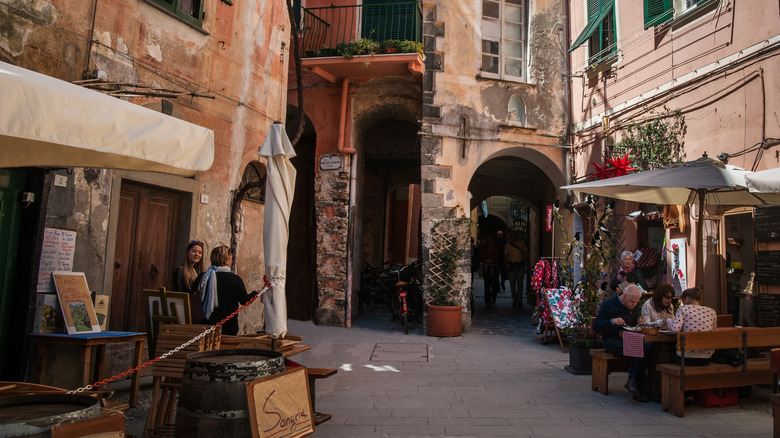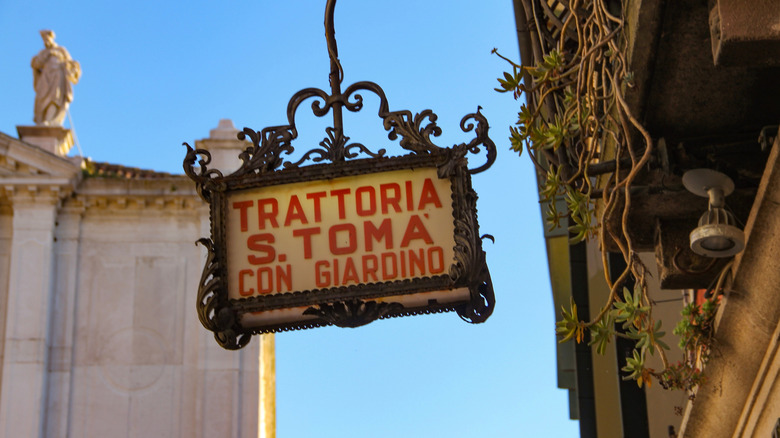Rick Steves Tells Tourists To Look For These Specific Words To Find Authentic, Affordable Meals In Italy
Italy and great food go together like basil, tomato, and balsamic. In other words, they're a match made in heaven. Touring the fabled boot is a real whirlwind for any foodie, and the experts agree. Rick Steves — you know, only the fellow who's been guiding travelers through Europe since way back in 1976 — says that this corner of the continent keeps his taste buds interested more than just about any other out there. In fact, it's Italy that gave Rick Steves the best meal of his life, no less. On top of that, the land of pesto and pasta is consistently ranked among the best culinary destinations on the planet. So you know it's going to be yummy.
But how can you ensure that every plate of gnocchi, each salty lampredotto, and every spoonful of saffron-infused risotto is going to be top-notch? Steves has a few pointers on that count. The veteran travel maestro offers a guide to the various types of eateries and dishes that await in Italy — outlining what words to look out for when choosing a place to dine and perusing the menu. Needless to say, it makes interesting reading for anyone planning a tasting foray into the world of la cucina italiana.
Steves' guide opens with a few generic pointers, no doubt gleaned from decades of discovering hidden-gem restaurants in the backstreets of towns and cities from Naples in the south to Milan in the north. The general rule? Simplicity. You want places that are off the beaten path and away from the tourist centers. The ones packed with Italian patrons; the ones without professionally designed menus.
The words you should know when dining in Italy
Steves also offers a glossary of essential words for any would-be gourmand traveling this nation of buffalo mozzarella and minestrone. His first tip: Get to know the difference between a trattoria and a ristorante. It turns out that the latter is a more straight-laced, posh, and fancy affair, without the same focus on authentic regional cooking. In a trattoria, as Redditor u/Flame_Alchemist so helpfully describes: "Usually there isn't a real (printed) menu, and the available dishes (mostly regional dishes, so if you go to a trattoria near Milan you'll find risotto and meat, but if you go in the south of Italy it's more likely to eat fish) change almost every day."
Another option will be the osteria, which Steves says has gone from rustic to high-brow (and heavier on the wallet). True enough, these joints began as rowdy wine bars and have been around for over a millennium. A far cry from the osterie that brandish Michelin stars and menus of curated fine-dining today.
Finally, there's the enoteca, which Rick Steves hints is a fantastic option for that sought-after mix of affordability and quality. The word literally means "wine library," but the truth is there's often food to boot — from small plates of salted olives right up to tomato soups topped with creamy burrata. Of course, the wine is also very important. As it should be in the country that hosts the vineyard paradise of Franciacorta and the complex reds of Langhe, to name just two iconic regions.

